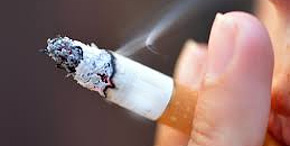Florida Smokers Puff More Than Counterparts
September 2, 2018
Slightly more than 13 percent of Florida adults smoked in 2017, but they go through more tobacco than average smokers nationally, a draft report given Tuesday to Florida health officials shows.
The findings, culled from the Florida Adult Tobacco Survey, show that a Florida smoker on average puffs 14.6 cigarettes a day, Erik Crankshaw, a researcher with North Carolina-based RTI, told members of a tobacco advisory council who met in Tallahassee.
Nationally, the draft report said smokers average 11.4 cigarettes per day. About 14 percent of adults nationally smoked in 2017.
 Crankshaw said researchers don’t know why Florida smokers smoke more.
Crankshaw said researchers don’t know why Florida smokers smoke more.
“It continues to stand out, it’s one we don’t have a good explanation for, and we are always looking for creative thoughts on why it might be,” Crankshaw, told members of the Comprehensive Tobacco Education and Use Prevention Program Advisory Council. “It is significant, and it has been for years.”
While they smoke more cigarettes, Florida smokers try to kick the habit more often than their peers nationally. According to the draft report, 59.8 percent of adult smokers in Florida had made an attempt to quit in 2017, compared to 48.9 percent nationally.
While not everyone who attempts to quit is successful, Crankshaw said it’s important data to track because it is “something that is quite sensitive to programmatic efforts” to reduce smoking.
While RTI has conducted independent reviews of the Bureau of Tobacco Free Florida, the findings this year may have added importance.
Public health advocates beat back efforts this spring to eliminate a decade-old requirement that mandates certain funding requirements for Florida’s anti-smoking efforts.
Les Beitsch, a state deputy secretary of health who chaired Tuesday’s meeting, said it would be very important to show the return on investment that the anti-smoking program has had for the state.
Beitsch was referring to a proposal this year that would have eliminated a requirement in the Florida Constitution to set aside 30 percent of overall tobacco education and prevention funding for an edgy advertising and marketing campaign. The money comes from a 1997 multibillion-dollar legal settlement with the tobacco industry.
Ultimately, the proposal was never endorsed by the Constitution Revision Commission, which meets every 20 years and has the ability to put amendments on the ballot. Nevertheless, Beitsch said public health advocates need to be prepared to answer some tough questions about Tobacco Free Florida in the coming years.
To that end, RTI’s analysis this year included a section on the economic analysis of proposed funding cuts. According to RTI’s analysis, smoking-related health care costs between 2019 and 2028 will total $86.3 billion.
A 5 percent reduction in funding, according to RTI, could increase the cost estimate by $500 million over 10 years.
Crankshaw also told the group that a 2017 survey of 2,000 health care providers across the state showed that many of them were not aware that Medicaid offered smoking-cessation services, including nicotine patches.
“Seventy-three percent of those polled did not know that Medicaid covered the nicotine patch,” he told members of the advisory council, which meets quarterly to advise the Department of Health on policies to help eradicate smoking.
The percentage of smokers in the Medicaid program is high. Pooling the data between 2012 and 2016, RTI estimated that the total population of smokers in the state was 14.6 percent.
Insurance status also affects smoking status according to the RTI analysis. Whereas 9.8 percent of those with private insurance were smokers, 25.4 percent of people on Medicaid were smokers. That nearly equals the percent of smokers among the uninsured, which equaled 25.8 percent.
by Christine Sexton, The News Service of Florida



Comments